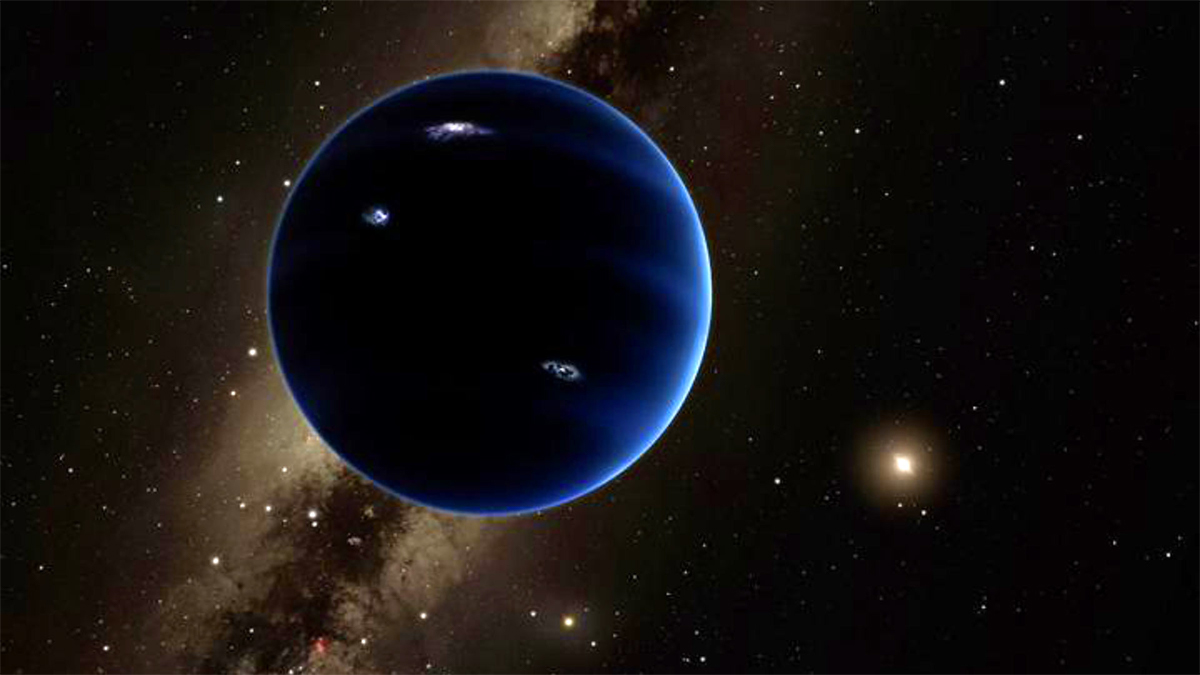Nobody can work out where the solar system's mysterious ninth planet came from
None of the theories so far are convincing

Earlier this year, astronomers presented evidence of a huge planet, ten times the mass of Earth, lurking on the distant edge of the solar system. They called it Planet Nine.
The evidence comes in the form of the weird gravitational behavior of a collection of space rocks that whizz in and out of the inner solar system. Their orbits have been aligned by something enormous out there - an object so far away that it's extremely difficult to observe directly.
But there's a problem - no one can work out how such a huge planet got there. Did it form in place, or was it originally a member of the club of inner planets but got booted out of the inner solar system during some cosmic turmoil?
Gravitational Influence
"The evidence points to Planet Nine existing, but we can't explain for certain how it was produced," says astronomer Gongjie Li, lead author on a paper which explores some theories, due to be published in the Astrophysical Journal Letters.
Li and her colleague Fred Adams performed millions of computer simulations to try and narrow down some of the theories. One - the most likely - is that the gravitational influence of another star passing close by the solar system pulled the planet's orbit outward. The solar system formed in a star cluster among several thousand others, so such encounters were more common in the early days of the solar system than they are today.
Unfortunately, a rogue star would have been much more likely to pull a planet out of the solar system entirely, and it would have had to have been sitting pretty far away from the Sun in the first place. As such, there's only a 10% probability at best that a hypothetical Planet Nine could have landed in its current orbit that way.
Li and Adams also examined the possibility that Planet Nine is an exoplanet that was stolen from another star system, or even a free-floating planet that was captured by the Sun as it drifted past. Both scenarios, they conclude, have a likelihood of less than 2%.
Sign up for breaking news, reviews, opinion, top tech deals, and more.
Shunted Out
Another suggestion, proposed by Scott Kenyon and Benjamin Bromley in a paper in the Astrophysical Journal, is that Planet Nine formed in the inner solar system but was gradually shunted outward by the other gas giants - mostly Jupiter and Saturn.
"Think of it like pushing a kid on a swing. If you give them a shove at the right time, over and over, they'll go higher and higher," explains Kenyon. "Then the challenge becomes not shoving the planet so much that you eject it from the solar system."
They also explored the possibility in another paper that Planet Nine simply formed in place. They found that the right configuration of debris in the early solar system could have created Planet Nine. "The nice thing about these scenarios is that they're observationally testable," Kenyon said. "A scattered gas giant will look like a cold Neptune, while a planet that formed in place will resemble a giant Pluto with no gas."
Right now, there's no clear answer - and more observations will be required to confirm whether the planet even exists, let alone how it got to where it is today.
"Until Planet Nine is caught on camera it does not count as being real," astronomer Constantin Batygin told The Atlantic shortly after the prediction of a new planet was announced back in January. "All we have now is an echo."
